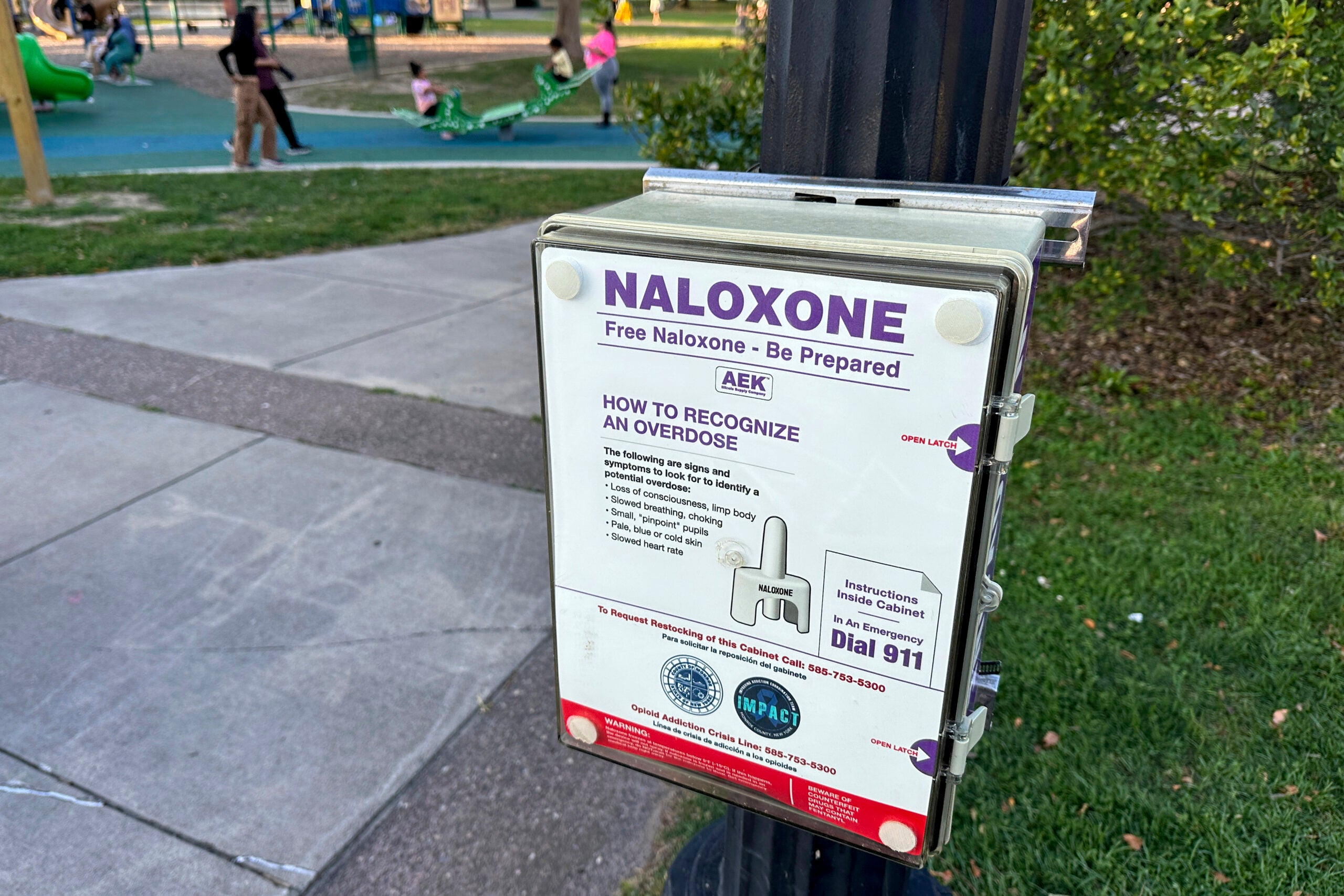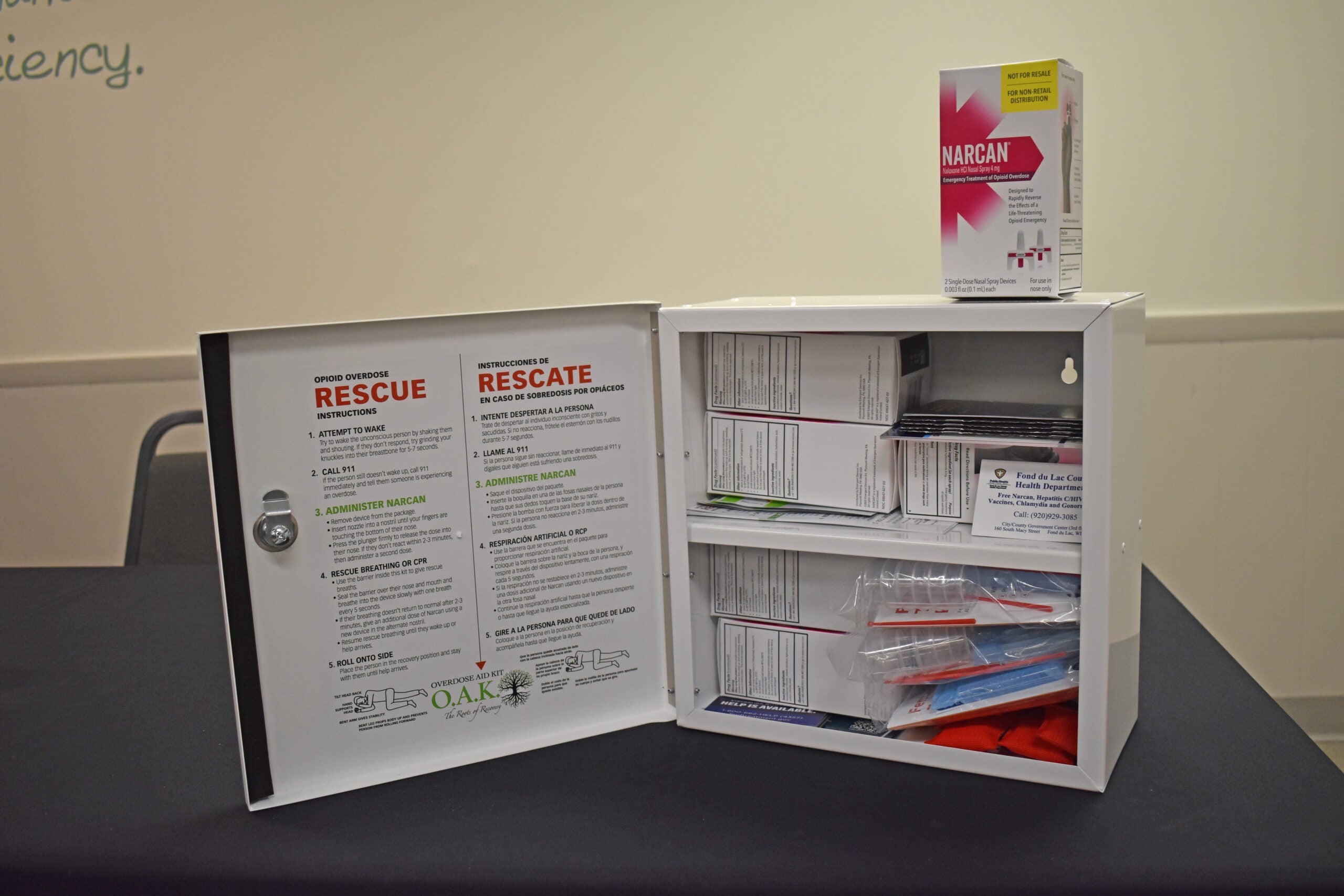Six people died in Milwaukee County this weekend of suspected drug overdoses, continuing a grim trend across the state.
Already, the Milwaukee County Medical Examiner’s Office has recorded 79 drug-related deaths in 2018 and is waiting for toxicology reports for another 65 suspected drug overdose deaths.
Opioids play a role in most of the county’s overdose deaths, which have almost doubled since 2013, according to the medical examiner’s office, but health and law enforcement officials warn of an overlooked trend in the region.
Stay informed on the latest news
Sign up for WPR’s email newsletter.
Based on data from the medical examiner’s office, cocaine-related deaths almost tripled in Milwaukee County between 2013 and 2017, jumping from about 50 to more than 140 cases. The number of cases where both cocaine and an opioid or synthetic opioid were present increased five-fold in the same period from about 20 to almost 110 cases.
Powerful synthetic opioids like fentanyl — a drug up to 100 times stronger than morphine — are being found in less lethal drugs more often, driving up the number of fatalities, said Jake Jansky of the Wisconsin Department of Justice’s Division of Criminal Investigation.
“We’re not 100 percent sure why we’re getting fentanyl because there’s definitely other ways to make more money on cocaine by mixing it with, you know, chemicals that are not lethal and are probably cheaper,” he said.
One possibility is that by adding an opioid like fentanyl to a drug like cocaine, dealers can keep a customer longer, said Jansky.
“You add that fentanyl in and that may make it more addictive and now you may have a customer for eight months to a year, assuming they survive,” said Jansky. “Versus a customer for two weeks and they move on to someone else.”
Still, John Schneider, chief medical officer for Milwaukee County’s Behavioral Health Division, described two other possibilities.
One is cross-contamination.
Schneider said he wouldn’t be surprised if synthetic opioids like fentanyl just got mixed up during packaging.
Fentanyl’s presence in the county has boomed in the past five years. In 2015, there were 30 cases where the drug was involved, the number climbed to 97 cases in 2016. According to the medical examiner’s office, last year there were 187 fentanyl-related deaths.
Schneider said another possibility could be users seeking different, more potent highs. Schneider said by mixing cocaine and an opioid, users create a “speedball.”
Depending on the combination and ratio, a person can alter their experience. But Schneider said it can be hard to know exactly how to measure drug dosages because the half-lives of synthetic opioids can drastically vary.
“That’s the challenge with a drug supply where you don’t go into a drugstore with a prescription from a physician,” Schneider said. “You don’t know what you’re getting, what strength it is, who cooked it and what analogs it has in it.”
In 2017, out of roughly 140 cocaine-related deaths, more than 100 involved an opioid.
Sara Schreiber is the forensic technical director of the toxicology lab in Milwaukee County’s Medical Examiner’s Office; she has seen cocaine-related deaths increase first hand.
“But since the numbers aren’t quite as numerous as those in the opioid column, I don’t think that they’ve drawn the attention that it deserves for what this situation is evolving to be,” Schreiber said.
Jansky says Milwaukee County and southeastern Wisconsin aren’t isolated in the drug trends its experiencing.
“The days of feeling safe using a product that you believe is non-addictive or non-lethal, I think those days have come to an end,” he said. “I would try to impress to the people of Wisconsin that the days of feeling secure in using illegal narcotics have come to an end and came to an end with the rise of fentanyl.”
Wisconsin Public Radio, © Copyright 2025, Board of Regents of the University of Wisconsin System and Wisconsin Educational Communications Board.







